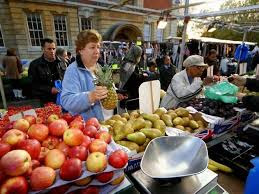Smartphone handsets:
Mobile networks:
UK car insurance:
Rail travel from Twickenham:
Different markets have different market structures.
What determines how competitive a market is?
2. The extent of barriers to entry.
In retail barriers to entry are low.
Why?
In running a mobile network or railway the barriers to entry are high.
Why?
Car manufacturing, aeroplane production or oil refining have high barriers to entry.
Why?
3. The extent to which products can be differentiated.
4. The knowledge that buyers and sellers possess.
5. How well regulated a market is.
Impact on businesses of a competitive environment:
Price
In a highly competitive market, businesses have less control over the prices they charge.
Click on the logo:
A reputation for quality can allow a business to charge higher prices.
Click on the logo:
Profits:
These have to be shared with a number of businesses in a competitive market.
If the formula for calculating profit is:
TR minus TC......
........................then how must a firm in a competitive market maximise profits?
Communication with customers:Do firms in a competitive market try to engage with their customers?
Why?
Innovation:
In highly competitive markets innovation will be encouraged.
What does this picture suggest?
Product range:
The failure to match a rivals's extensive product range might result in lost customers.
Click on the graphic:
Marketing:
A competitive market is likely to have high levels of marketing spending.
Do these pictures show that?
Market size is determined by the number of buyers of a product.
Global markets - firms competing internationally.
National markets - operations within national borders.
Click on the picture:
Regional markets:
These may operate within a country or across a number of countries. Examples here.
Local markets:
















